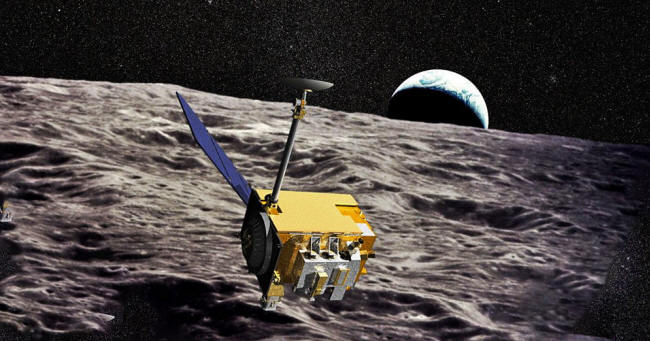|
by Dr. Tony Phillips July 16, 2019 from SpaceWeatherArchive Website
2019 is not a good year to fly into deep space. In fact, it's shaping up to be
one of the worst
of the Space Age...
One of the
deepest Solar Minima of the
past century is underway now. As the sun's magnetic field weakens,
cosmic rays from deep space are
flooding into the solar system, posing potential health risks to
astronauts.
The Cosmic Ray Telescope for the Effects of Radiation (CRaTER) has been circling the Moon on NASA's Lunar Reconnaissance Orbiter spacecraft (LRO) since 2009.
Researchers have just
published a paper (Update
on Galactic Cosmic Ray Integral Flux Measurements in Lunar Orbit
With CRaTER) in the journal Space Weather
describing CRaTER's latest findings.
An artist's concept of
Lunar Reconnaissance Orbiter.
This always happens during Solar Minimum.
As solar activity goes down, cosmic rays go up. The last two Solar Minima have been unusually deep, leading to high cosmic ray fluxes in 2008-2010 and again in 2018-2019.
These are the worst years since humans first left Earth in the 1960s.
In their paper, Cary Zeitlin, Nathan Schwadron and co-authors describe an interesting experiment by NASA that highlights the relative peril of solar flares vs. cosmic rays.
In 2011, NASA launched the Curiosity rover to Mars. Inside its spacecraft, the rover was protected by about as much shielding (20 gm/cm2) as a human astronaut would have.
A
radiation sensor tucked inside kept
track of Curiosity's exposure.
Why the imbalance?
Since 2015, the flux of cosmic rays at the Moon has nearly doubled. Another plot shows the complete CRaTER record starting in 2010.
If an astronaut were caught outside on EVA during an intense, unexpected flare, acute effects could include vomiting, fatigue, and low blood counts.
A quick return to Earth might be required for medical care. Cosmic rays are more insidious, acting slowly, with maladies such as cancer or heart disease showing up years after the exposure.
As 2019 unfolds, Solar Minimum appears to still be deepening.
Cosmic rays haven't quite broken the Space Age record set in 2009-2010, but they're getting close, only percentage points from the highest values CRaTER has ever recorded.
|




